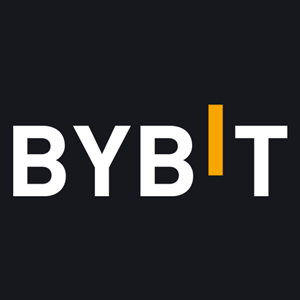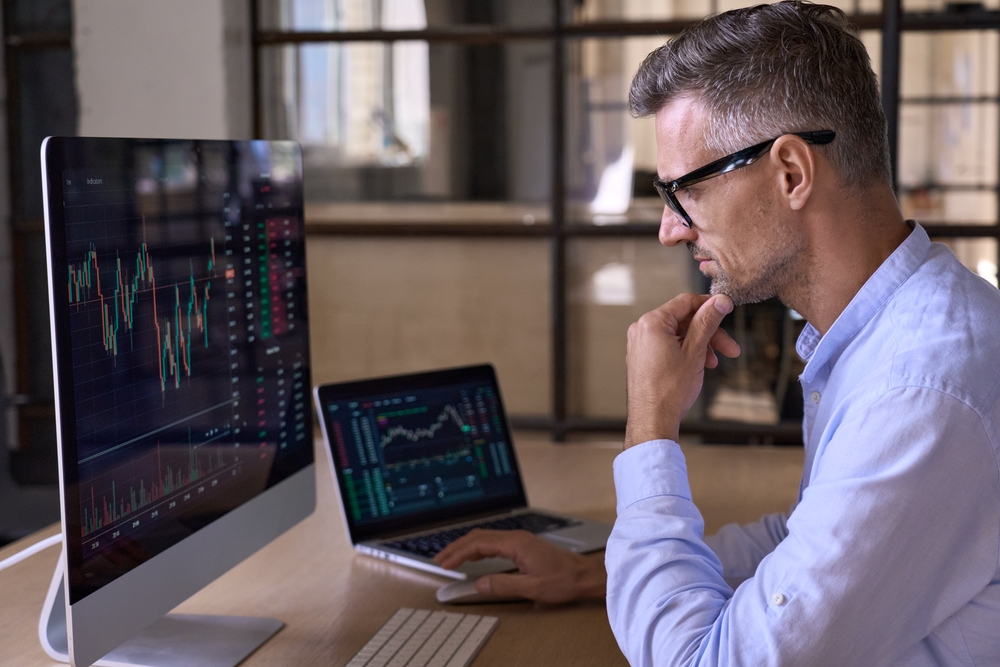Comprehensive Crypto Margin Trading Guide For Beginners April, 2025
Also referred to as leveraged trading, margin trading involves estimating cryptocurrency markets and “leveraging” borrowed assets while initially putting up just a small portion of your finances. The margin is the sum of the cryptocurrency needed to enter a leveraged position.
 Written by Nikolas Sargeant
Written by Nikolas Sargeant
| Taxas da Bolsa | Métodos de Depósito | |||||||||
|---|---|---|---|---|---|---|---|---|---|---|
| nome | Criptos Suportadas | Taxa de Tomador | Taxa de Autor | Taxas de Saque | Transferência Bancária | Cartão de Crédito | Investidor dos EUA permitido | ACTIVO DESDE | Offer | |

Bybit
Contract Trading Exchanges
|
182 | 0.06% | 0.01% | 0.0005 | 2018 |
RECEBA ATÉ US$600 EM RECOMPENSAS
|
Visita | |||

PrimeXBT
Contract Trading Exchanges
|
34 | 0.01% | 0.02% | 0.0005 | 2018 |
GET 35% DEPOSIT BONUS
|
Visita | |||
|
Phemex
Contract Trading Exchanges
|
150 | 0.06% | 0.01% | 0.0004 | 2019 |
RECEBA UM BÔNUS DE DEPÓSITO DE ATÉ US$180
|
Visita | |||

KuCoin
Centralized Exchanges
|
638 | 0.10% | 0.10% | 0.0005 | 2017 |
RECEBA ATÉ 500 USDT EM BÔNUS DE CADASTRO
|
Visita | |||
Many investors and traders have found success in trading cryptocurrency. But what if you could leverage your position on digital assets by X5, X10, or even X100? Crypto margin trading allows users to open highly profitable positions without holding the capital required.
The team here at Cryptowisser has put together an extensive crypto margin trading guide for beginners to help them set off on the right foot in the market. This thorough guide will highlight the top exchanges offering margin trading and help readers to understand the benefits and risks involved. Before entering a margin position, it’s important to learn the essentials.
Key Takeaways
- Professional traders often use margin trading, so learn the methodology before you begin trading.
- Margin trading has the potential to lead to significant gains.
- Leverage can be used to open a trading position by borrowing funds from the exchange.
- It involves intense volatility and is often extremely risky.

What Is Margin Trading?
Also referred to as leveraged trading, margin trading involves estimating cryptocurrency markets and “leveraging” borrowed assets while initially putting up just a small portion of your finances. The margin is the sum of the cryptocurrency needed to enter a leveraged position.
Margin trading can be opened in two ways:
- Short position: You can place bets on the price decreasing
- Long position: You can place bets on the price increasing
When a trader enters a long position, they buy cryptocurrency, anticipating that sometime in the future, when its value increases, they can sell it and gain profits from the price disparity. Conversely, with a short position, an individual borrows cryptocurrency at the current price to buy it again after its price diminishes, allowing them to make money.
You will often see the ratios for leverage positions shown on trading platforms as 20:1 or 100:1. Meaning if an individual has $2,000 in their trading account and wants to open a long position having a 100:1 leverage ratio, they must have equity - from their funds - that is equivalent to 1% of their position size. The crypto exchange will then provide the other 99%. Remembering that 99% isn’t free is important, which we’ll explain later when we discuss risk.
How Does Margin Trading Work?
Margin trading crypto includes borrowing capital to make larger or more frequent trades. An important aspect of margin trading to bear in mind is what's referred to as the liquidation rate. When the market arrives at the liquidation price, the exchange will close a position automatically. This is done so traders will only lose their funds and not any of the funds given to them.
When trading with one's own capital, the liquidation price for a long position on an asset is zero. Yet, with heightened leverage, the liquidation cost ascends nearer to the traders' buy-in cost.
As an illustration, suppose a trader makes a long investment worth $100 in bitcoin, and its worth increases by 10%. The merchant will make $10 in profit (excluding any expenses). When the same dealer trades with a leverage of 5x, their gain would be $50 (10 x 5 50).
Leveraged trading in cryptocurrency may utilize the leverage of X10, X50, and even X100 on certain platforms (such as Phemex). While this offers the opportunity to gain higher returns, it brings considerable risk.

Best Exchanges For Crypto Margin Trading
The growth of crypto trading has opened the doors to a wealth of cryptocurrency exchanges offering margin trading. While we haven’t listed all of them on this page, some of the best for 2023 are listed below.
- Phemex - A leading exchange supporting over 200 cryptocurrencies and tokens, focusing on leveraged trading.
- Bybit - The main function of the platform is its derivatives trading, while they also provide spot trading, staking, and other services.
- KuCoin - Launched in September 2017, KuCoin boasts more than 8 million clients from 200+ countries and regions worldwide.
- PrimeXBT - Primarily operating as a leveraged trading platform, PrimeXBT offers a range of trading options backed by a multilevel industry-leading security system.
Leverage can set trading amounts anywhere between X10 and X100. Any trade carried out using a leveraged position carries a level of risk, even more so when high leverage is used. The excessive volatility of the crypto markets makes margin trading in digital assets riskier than this trading technique might be with more traditional assets.
Understanding Margin Calls & Liquidation
When you borrow money from an exchange to margin trade Bitcoin, the exchange that provides the capital keeps several controls in place to lower their risk. If you open a trade and the market moves against you, the exchange will ask for more collateral to secure your position or forcibly close the position.
When this occurs, your exchange will likely hit you with a so-called ‘margin call.’ A margin call occurs when the asset's value in a margin trade falls below a certain point. The exchange that funds the margin trade will ask for more funds from the trader to lower their risk. Most exchanges will notify traders via email, but monitoring your margin levels actively is important.
If the margin level of a position becomes too insecure, an exchange is likely to close the position — this is referred to as the margin liquidation level or liquidation price. Liquidation occurs when an exchange automatically closes a position to ensure the only capital lost is the capital deposited by the trader that opened the position.
Suppose a trader opens a 2:1 long position when the price of Bitcoin is $10,000. The position cost is $10,000, but the trader has borrowed an additional $10,000 from the exchange. The liquidation price of the position is, therefore $5,000 — at this price level, the trader has lost their initial $10,000 collateral and is thus liquidated by the exchange.
Why Margin Trade?
Margin trading allows confident traders to open positions that can be far more profitable than they would otherwise be able to access. For example, a successfully closed position at 100X leverage will yield 100 times more profit than a position opened via a “normal” trade.
Margin trading Bitcoin and other cryptos also allow strategic traders to generate profit in a bear market by opening short positions. For example, a trader that expects a large price dip could commit a portion of their portfolio to a short position to get a profit that offsets the potential loss incurred by a major price dip.
Pros And Cons Of Margin Trading
Regarding any investment approach, crypto margin trading has advantages and disadvantages. We put this table together, which outlines them clearly.
Pros |
Cons |
| Huge upside potential to earn significant revenues within a short window of time. | Very dangerous, and crypto’s unpredictability further heightens risk. |
| Traders can create larger positions with less investment capital. | Trading can lead to huge losses in a short amount of time. Frantic market fluctuations may cause trades to be terminated, resulting in a loss before traders can take action. |
| Offer a possibility to gain success during minor market shifts. | The market demands precise timing. |
| Traders gain the ability to hold lesser amounts of cryptocurrency on an exchange. | A trader should exit a trade when it has yielded a profit due to leverage amplifying market motions. Those who are inexperienced at trading can readily suffer major losses when taking out leveraged positions. |
Crypto Margin Trading Exchanges
Choosing the best bitcoin leverage trading platform can be a difficult process — there are many exchanges online today that offer leveraged trading. Trading on the highest leverage crypto trading platform is not always the best option. There are several important factors that should be considered when selecting margin trading crypto exchanges.
Different exchanges offer different levels of leverage. Some margin Bitcoin exchanges, such as PrimeXBT, offer up to 100X leverage. The interest rates offered by on leveraged trading are another essential factor — depending on the length and leverage of your position, you may end up paying extremely high-interest rates.
Ascendex, for example, is a highly popular exchange that offers leveraged trading of up to 100X with variable interest rates — one of the highest-leverage Bitcoin trading platforms online. The interest rates offered by BitMax can be as low as 3.65% per year or 0.01% per day, which is a highly favorable rate for short-term positions.
Some margin traders use complex order types to take profit incrementally or set up stop losses, which lowers the risk of liquidation. Some margin crypto exchanges may offer fewer order type options than others. ByBit, another margin trading crypto exchange that offers up to 100X leverage, makes a wide range of complex order types available to traders seeking to create effective risk management strategies when trading.

It’s also important to consider an exchange's funding and fiat support options when margin trading. CEX.io is one of the few exchanges that offer crypto margin trading and fiat deposits, making it possible to fund or withdraw from an account via wire transfer or credit card payments.
The KYC and AML requirements may affect which exchanges you can trade at. US Securities law may prevent US-based traders from leveraging trading crypto on some platforms, so it’s important to check which platforms are available where you are at. Phemex is an example of a popular crypto margin trading exchange that US traders can trade at.
How To Short Bitcoin And Other Cryptocurrencies?
One of the most popular short bitcoin (BTC) methods is to take out a cryptocurrency loan, then exchange it for an asset you anticipate won't decrease in value, like US dollars. If BTC were to plummet, you can purchase back BTC from the general market and use the funds to fulfill your loan. Since the cost of your BTC should be lower, you will have generated a profit—and can keep the remainder.
Short traders usually use leverage, meaning they borrow much more cryptocurrency than they possess so as to exploit the optimal gains from their short trades. Leverage trading holds considerable risk in that an exchange could necessitate the return of its finances if the market moves unfavorably against you. This is one aspect of margin trading that is particularly ruthless.
Risks Of Crypto Margin Trading And How To Manage Them
Beginners are encouraged to avoid margin trading, as losses can be significant, and any trader taking leveraged positions should have a rigid risk strategy in place before beginning. Traders should prepare a sound strategy before engaging in this trade setup if they want to make a sound investment.
To guide our readers along the right path, we’ve put together some beginner tips to help them ensure they have the right tools to start margin trading.
Risk Management: If you are trading on margin, establish distinct risk management policies, and be wary of hubris. Assess how much you would be willing to stake, as it can be lost completely. Establish thresholds for closing out positions, benefiting from gains, and, most importantly, draft stop-loss levels.
Start Small: Begin with a small investment when engaging in margin trading. By starting out slowly, you can build your confidence before diving into the depths of leveraged trading.
Use Stop Loss And Take Profit: Establish a financial value in which you want the trade to end your place, permitting you to safeguard losses and avoiding the probability of losing everything. Generating a return on your investments at certain price points will lower your total earnings, but it is an effective way to manage risk.
Pay Constant Attention: Crypto dealing can, at times, have huge changes that manifest in both directions, producing candle wicks. The concern is that the drop could reach our liquidation figure, which is possible when leverage is relatively large. Sometimes it’s best to remain glued to the screen throughout the trading process!

Don’t Revenge Trade: After incurring a loss in the crypto markets, it may be tempting to try and regain all of it in one trade, but consider the risks involved beforehand. Don’t go all in at once. Remember risk management and the importance of using your stop loss and take profit levels.
Keep An Eye On The Market: The value of Bitcoin may be heavily swayed by main crypto occurrences like rulings on a Bitcoin ETF, SEC protocols, and the like. Although many traders confidently depend solely on technical analysis, remember that these events could have a vital influence on crypto.
In Summary
While margin trading may be intimidating initially, once you get to grips with the process, you can take a more hands-on investment approach, which can become a lucrative strategy.
Don’t overdo things. While margin trading does not necessitate having the same amount of capital as other investment options, that does not suggest that you should risk money beyond what you can afford to lose.
By establishing a stop loss and investing in only smaller amounts of actual leverage, the chances of incurring losses are minimized, and you give yourself more leeway. Take your time. As time goes on, your knowledge base will grow, and soon enough, you can easily go into highly leveraged markets.
| Taxas da Bolsa | Métodos de Depósito | |||||||||
|---|---|---|---|---|---|---|---|---|---|---|
| nome | Criptos Suportadas | Taxa de Tomador | Taxa de Autor | Taxas de Saque | Transferência Bancária | Cartão de Crédito | Investidor dos EUA permitido | ACTIVO DESDE | Offer | |

Bybit
Contract Trading Exchanges
|
182 | 0.06% | 0.01% | 0.0005 | 2018 |
RECEBA ATÉ US$600 EM RECOMPENSAS
|
Visita | |||

PrimeXBT
Contract Trading Exchanges
|
34 | 0.01% | 0.02% | 0.0005 | 2018 |
GET 35% DEPOSIT BONUS
|
Visita | |||
|
Phemex
Contract Trading Exchanges
|
150 | 0.06% | 0.01% | 0.0004 | 2019 |
RECEBA UM BÔNUS DE DEPÓSITO DE ATÉ US$180
|
Visita | |||

KuCoin
Centralized Exchanges
|
638 | 0.10% | 0.10% | 0.0005 | 2017 |
RECEBA ATÉ 500 USDT EM BÔNUS DE CADASTRO
|
Visita | |||